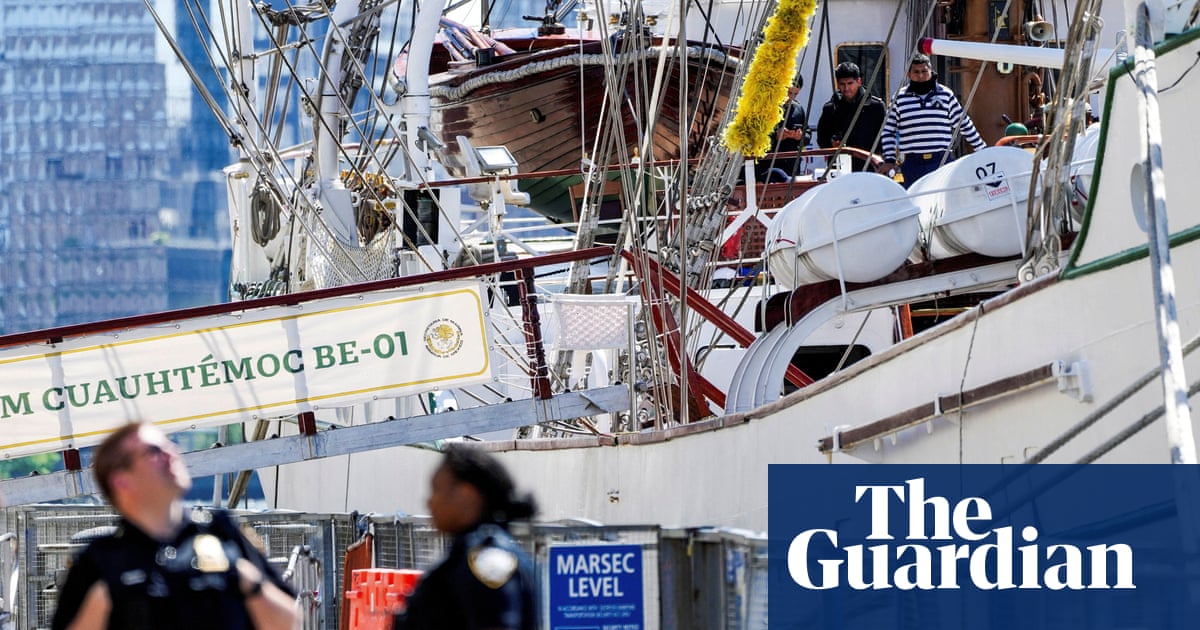The incident involving the Mexican training ship Cuauhtémoc and the Brooklyn Bridge raises several points of concern and interest. The article outlines details surrounding the crash, the casualties involved, and the subsequent investigations. Analyzing the implications and context of this event reveals various layers of societal impact.
Intent Behind the Article
The report seems to aim at informing the public about a tragic accident while emphasizing the role of the ship’s pilot from New York. By presenting details about the pilot's limited reaction time, the article may also be subtly shifting some responsibility away from the crew and towards external factors like the pilot’s expertise or the equipment's functionality.
Public Sentiment and Perception
The portrayal of the incident could evoke feelings of sympathy for the victims and their families, especially by sharing personal aspirations of the deceased soldiers. This humanizes the tragedy and may lead to a communal response of grief and support. Furthermore, by highlighting the ship's goodwill mission, the piece attempts to present the incident in a broader context of international cooperation.
Information Omission
While the article provides substantial details about the crash, it may not fully explore the operational protocols of maritime navigation or the potential systemic failures that could have contributed to the accident. This could lead to a perception that the incident is isolated rather than part of a larger issue related to maritime safety.
Manipulative Elements
The article could be seen as somewhat manipulative, particularly in its framing of the pilot's involvement and the conditions leading to the crash. By emphasizing the pilot's New York origin, it may unintentionally invoke a sense of local responsibility or accountability, which might detract from broader systemic issues that require attention.
Trustworthiness of the Report
The article appears to be credible, given the inclusion of official statements from the Mexican navy and relevant authorities like the National Transportation Safety Board (NTSB). However, the level of detail regarding the investigation process and the absence of diverse perspectives might raise questions about its comprehensiveness.
Community Impact
The tragedy could mobilize community support for better maritime safety protocols and increased awareness about the risks involved in such training missions. It may also influence public opinion regarding the operational standards of naval training vessels.
Economic and Political Implications
While the immediate economic impact may be limited, the incident could prompt discussions around funding for maritime safety improvements. Politically, it may affect diplomatic relations, particularly between Mexico and the United States, as the investigation unfolds.
Target Audience
The report is likely to resonate more with audiences concerned about maritime safety, military personnel, and families of service members. It appeals to those who value international cooperation and goodwill initiatives.
Market Influence
In the short term, this incident is unlikely to have a significant impact on the stock market or global financial markets. However, if it leads to increased scrutiny and regulation of maritime operations, it could affect related industries, such as shipping and naval construction.
Geopolitical Relevance
While the incident does not appear to have direct implications for global power dynamics, it highlights the importance of safety in international naval operations. This aligns with ongoing discussions about regulatory standards in various fields.
AI Involvement in Writing
There is a possibility that AI technology was utilized in drafting the article, particularly in organizing information and generating a coherent narrative. This could manifest in the structured presentation of facts and the clarity of language used.
Conclusion
Overall, the article provides a factual account of a tragic incident while subtly guiding public sentiment. Its credibility is supported by official sources, although it could benefit from a broader exploration of systemic issues. The implications of this event may resonate within communities and prompt discussions about safety and accountability in maritime operations.
